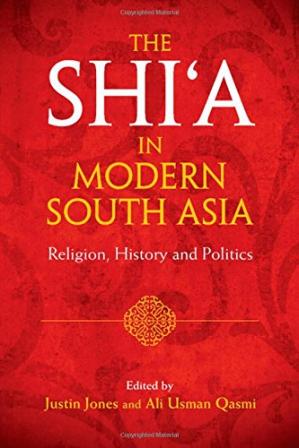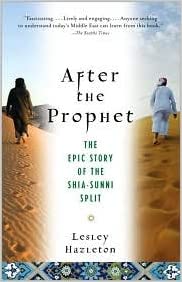The Precursor to Shia Genocide: Social and Psychological Foundations in Pakistan
Genocide, characterized by the systematic extermination of a cultural or religious group, necessitates extensive preparation and cannot be orchestrated overnight. Prior to the procurement of weapons and the coordination of mass killings, it is essential for a society to be conditioned to harbor animosity or indifference towards the targeted population. This conditioning does not occur spontaneously; instead, it follows a discernible pattern of psychological markers and societal behaviors that historically precede genocide.
In Pakistan, a socio-religious environment has been cultivated that fosters extreme exclusion and excommunication, affecting not only religious minorities but also various sub-sects within Islam. Shortly after Pakistan’s formation, religious minorities, including Hindus, were constitutionally marginalized with the passage of the Objectives Resolution by the Constituent Assembly in 1949, followed by Pakistan’s formal declaration as the Islamic Republic in 1956. These developments were driven by a hardline Sunni religious theocracy that sought to expunge the Islamic mystic tradition and its pluralistic culture from society. This agenda was bolstered by invoking puritanical pre-colonial theocratic traditions, such as those of Ahmed Sirhindi and Shah Waliullah, which aimed to eradicate the pluralistic religious practices common among both Shia and Sunni communities. Many of these traditions and festivals were subsequently labeled as “Shia practices,” thus marginalizing the Shia Muslim community within Pakistani society.
Simultaneously, the Deobandi madrassa movement, originating in the colonial United and Central Provinces and later spreading to the Pashto and Punjabi-speaking regions of present-day Pakistan, actively sought to ostracize Shia Muslims. This movement, which turned violent in the 1930s, saw Shia Muslims being forcibly prevented from practicing their rituals, including attacks on Ashura processions and public majalis. By the late 1920s, the anti-Shia campaign had proliferated across much of northern India. Following Pakistan’s independence, the radical Deobandi organization Tanzeem-e-Ahle-Sunnat-Wal-Jamaat formally demanded the prohibition of Muharram processions and public majalis in Pakistan, escalating to violent attempts to enforce these demands when they were not met.
The 1980s marked a significant escalation in efforts to exclude Shia Muslims from the Muslim community. Influential figures like Allama Ihsan Ilahi of Jamiat Ahl-e-Hadith openly declared Shias apostates, while new organizations within the Deobandi sect, such as Anjuman Sipah-e-Sahaba Pakistan led by Maulana Haq Nawaz Jhangvi, aggressively pushed for the constitutional declaration of Shia Muslims as apostates, often with state support. The widespread proliferation of derogatory slogans against Shias, such as “Kafir, Kafir – Shia Kafir” (Shias are apostates), became ubiquitous, appearing on public infrastructure and creating a hostile environment that endorsed violence against the Shia community.
The roots of this persecution trace back to the colonial era with the emergence of a Takfiri movement within the Deobandi sect, led by clerics such as Muhammad Qasim Nanawtawi of Darul Uloom Deoband. The radical Deobandi clergy have systematically campaigned against Shia Muslims since the institution’s inception in 1866, evolving into a genocidal movement by the 1980s. The community faces psychological red flags akin to those observed in previous genocides, characterized by derogatory language such as ‘Infidel Sect’ (Kafir Firqa) and ‘Blasphemous Community’ (Gustaakh Firqa), which became widespread in anti-Shia propaganda throughout the 1980s and 1990s. The distribution of hate-filled audio cassettes and literature further amplified the dehumanization and demonization of Shia Muslims, using terms like ‘Khatmal’ (metaphorically meaning bloodsuckers), “Bad-Tareen Makhlooq” (the worst creatures), and other derogatory epithets that justified violent acts against the community.
A pervasive element in genocidal violence is the “us” versus “them” dichotomy, often manifesting through nationalist or religious superiority complexes. This mindset begins with defining the in-group and asserting its dominance over perceived out-groups. For instance, the Nazis viewed Germans as racially superior due to their “Aryan blood,” thereby excluding Jewish Germans based on their religion. Similarly, the genocidal violence against Shia Muslims in Pakistan is rooted in the Sunni versus Shia divide, where Takfiri ideologues label Shias as descendants of Zoroastrians, dismiss their beliefs as “Madhab-e-Majus,” and portray Pakistani Shias as foreign agents, thereby excluding them from the broader Muslim community.
Such exclusionary culture not only fosters but also normalizes the potential for genocide. The Takfiri campaign against Shia beliefs promotes the perception that Pakistani Shias are acting against national interests, often branding them as agents of Iran or Israel. This ideology, which perpetuates Shia-phobia, encourages attacks on Shias, portraying them as existential threats to the nation.
The Role of Psychological Conditioning in Genocide
Following genocidal events, societies often grapple with understanding the motivations behind such acts and the characteristics of those who participate. Psychologists have explored these questions extensively, particularly following the Holocaust. Studies, such as Stanley Milgram’s infamous Milgram Experiment, have demonstrated that ordinary individuals can be compelled to engage in harmful actions through authoritative commands. Milgram’s experiment revealed that a significant proportion of participants were willing to administer what they believed were lethal electric shocks to others, solely because they were instructed to do so. This research underscores the ease with which societal norms and authority figures can persuade individuals to partake in genocidal actions or to become passive bystanders.
The Ecological Perspective on Genocide
Abbas Zaidi, a Professor of Media Studies, argues for an ecological perspective on genocide that transcends the traditional physical-eliminative framework. He posits that genocide should be examined in terms of its broader impact on the victims’ environment and their psychological and social well-being. Zaidi emphasizes the lived experiences of Shia Muslims in Pakistan, who navigate daily hostilities, from derogatory graffiti and fatwas declaring them apostates to systemic indifference from the state. This environment of persistent hostility and danger constitutes a “genocidal ecology” that affects every aspect of Shia life in Pakistan.
Zaidi’s ecological approach encompasses the prolonged trauma and ongoing marginalization of genocide survivors, as well as the evolving dynamics of genocidal campaigns. He suggests that the current framework of Shia genocide in Pakistan, which involves systematic social and psychological exclusion, could escalate to physical mass violence, particularly in response to a significant shock or perceived threat. ( For further detail Visit : https://shiamuslimgenocide.com/understanding-genocide-is-shia-muslim-community-facing-genocidal-campaign-by-abbas-zaidi/
Systematic Exclusion and Persecution of Shia Muslims
The persecution of Shia Muslims in Pakistan is marked by deliberate and institutionalized attacks on both their personal and communal identities. Shia Muslims are branded with pejorative labels such as ‘Kafir’ (apostates), ‘Ghaddar’ (traitors), and ‘Gustaakh’ (blasphemers), which serve to justify their exclusion and persecution. This framing not only facilitates social ostracism but also enables violent acts to be portrayed as morally justified or altruistic.
A key aspect of genocide, and mass violence, is the process of branding and objectification, which strips targeted groups of their individuality and humanity. In Pakistan, Shia Muslims are symbolized by their religious names, rituals, and cultural symbols, which have been co-opted to mark them as distinct and, therefore, as “others.” For example, even names common among Sunnis, such as Ali or Abbas, have been used to erroneously target individuals as Shia, illustrating the dangers of such symbolic branding. Furthermore, objectification extends to grotesque misrepresentations of Shia rituals, which are often depicted in derogatory and false terms to further alienate the community.
Structuring and Segregation: Foundations of Genocide
Structuring, in the context of genocide, involves the systematic organization of discriminatory policies and actions designed to target specific groups. This can include legal measures, bureaucratic protocols, and propaganda that isolate and vilify the group. An example in Pakistan is the amendment of Section 298 of the Pakistan Penal Code under General Zia-ul-Haq, which criminalized expressions that deviate from Sunni views on revered Islamic figures, effectively equating Shia beliefs with blasphemy. Such laws provide a legal pretext for violence and discrimination against Shia Muslims.
Segregation involves the physical and social separation of the targeted group, often through forced relocation, restricted movement, and limited access to resources. In Pakistan, Shia communities have faced increasing segregation due to targeted violence, including forced displacements from historically mixed neighborhoods. This segregation exacerbates their vulnerability and reinforces their marginalization.
Together, structuring and segregation create an environment where Shia Muslims are systematically isolated and stripped of their rights, setting the stage for further genocidal actions. The targeted violence and forced relocations that Shia Muslims have endured, from Karachi to Kurram Agency, exemplify these genocidal strategies, underscoring the severity of their plight.
Conclusion
The ongoing persecution of Shia Muslims in Pakistan displays numerous psychological and sociological markers of genocide, including symbolization, dehumanization, structuring, and segregation. These stages are not mere abstractions but are vividly and forcefully manifest in the lived experiences of Shia communities, who face targeted killings, bombings, and pervasive discrimination. The mechanisms of exclusion and violence against Shia Muslims in Pakistan align closely with recognized patterns of genocidal behavior, reflecting the deep entrenchment of these destructive processes within the country’s social fabric.
- Genocide Watch – The Ten Stages of Genocide:
-
- Website: Genocide Watch
- This resource outlines the ten stages of genocide, including symbolization, dehumanization, and organization (structuring). It provides an accessible overview and is widely used in academic studies on genocide.
- United States Holocaust Memorial Museum:
- Website: USHMM – Symbolization and Dehumanization
- This site offers detailed explanations and case studies on symbolization and dehumanization, particularly in the context of the Holocaust.
- Journal of Genocide Research:
- Available through academic databases like JSTOR or Taylor & Francis.
- Look for articles on the processes of symbolization and dehumanization within the journal. Articles can be accessed online through academic institutions or purchased individually.
Books (Offline and Online):
- “Genocide: A Comprehensive Introduction” by Adam Jones
- This book provides a thorough introduction to genocide studies, covering the stages including symbolization, dehumanization, and structuring. It’s available in libraries and can be purchased online.
- “Ordinary Men: Reserve Police Battalion 101 and the Final Solution in Poland” by Christopher R. Browning
- This book discusses the psychological and social processes, including dehumanization, that allowed ordinary individuals to participate in genocide.
- “A Problem from Hell: America and the Age of Genocide” by Samantha Power
- Available in bookstores and online. This book includes multiple case studies of genocide where the stages of symbolization, dehumanization, and structuring are evident.
- “The Social Psychology of Genocide: Theories, Policies, Practices” edited by Robert J. Sternberg
- This academic text dives into the psychological aspects of genocide, including symbolization and dehumanization processes.
Academic Databases:
- JSTOR, PubMed, Google Scholar:
- Search for academic papers using keywords like “Symbolization in Genocide,” “Dehumanization and Genocide,” and “Structuring of Genocidal Policies.” Many articles and papers are available for free or through university access.
- Taylor & Francis Online:
- The “Journal of Genocide Research” and “Holocaust and Genocide Studies” frequently publish articles on these themes.
- ProQuest Dissertations & Theses Global:
- For in-depth research, this database contains dissertations and theses on genocide, often exploring symbolization, dehumanization, and structuring.






